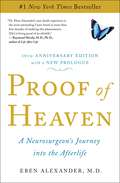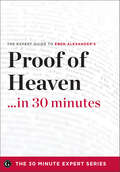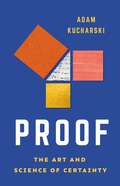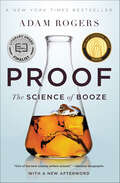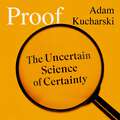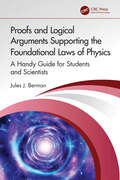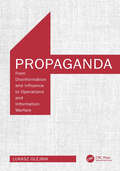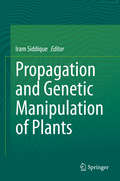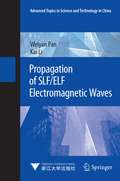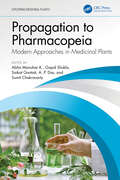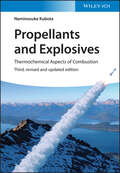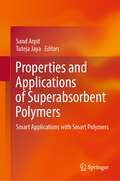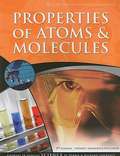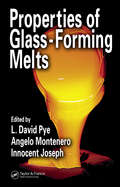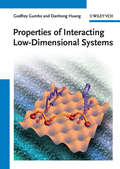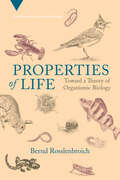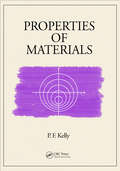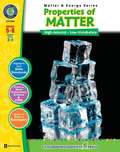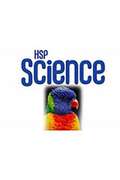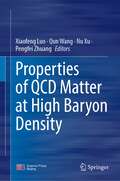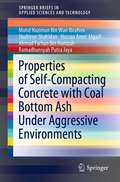- Table View
- List View
Proof of Heaven: A Neurosurgeon's Journey into the Afterlife
by Eben AlexanderA scientist's case for the afterlife...Thousands of people have had near-death experiences, but scientists have argued that they are impossible. Dr. Eben Alexander was one of those scientists. A highly trained neurosurgeon, Alexander knew that NDEs feel real, but are simply fantasies produced by brains under extreme stress. Then, Dr. Alexander's own brain was attacked by a rare illness. The part of the brain that controls thought and emotion--and in essence makes us human--shut down completely. For seven days he lay in a coma. Then, as his doctors considered stopping treatment, Alexander's eyes popped open. He had come back. Alexander's recovery is a medical miracle. But the real miracle of his story lies elsewhere. While his body lay in coma, Alexander journeyed beyond this world and encountered an angelic being who guided him into the deepest realms of super-physical existence. There he met, and spoke with, the Divine source of the universe itself. Alexander's story is not a fantasy. Before he underwent his journey, he could not reconcile his knowledge of neuroscience with any belief in heaven, God, or the soul. Today Alexander is a doctor who believes that true health can be achieved only when we realize that God and the soul are real and that death is not the end of personal existence but only a transition. This story would be remarkable no matter who it happened to. That it happened to Dr. Alexander makes it revolutionary. No scientist or person of faith will be able to ignore it. Reading it will change your life.re it. Reading it will change your life.
Proof of Heaven . . . in 30 Minutes: The Expert Guide to Eben Alexander's Critically Acclaimed Book
by Eben AlexanderProof of Heaven ...in 30 Minutes is your guide to quickly understanding the spiritual lessons in Dr. Eben Alexander's life-changing book, Proof of Heaven: A Neurosurgeon's Journey into the Afterlife. In Proof of Heaven, neurosurgeon Dr. Eben Alexander recollects his near-death experience and how it convinced him that there was proof of heaven. As told in Proof of Heaven, Alexander had a brush with death while in a seven-day coma, during which he experienced a transformative spiritual journey. Though his neocortex, the part of the brain that's responsible for higher-level functions, was inactive the whole time, his conscious mind experienced rich spiritual realms, giving him proof of heaven existing. Formerly an atheist, Alexander recounts his spiritual transformation in Proof of Heaven and shares the truths he learned as a result of his journey. An essential read for believers and skeptics alike, Proof of Heaven provides readers insight into a neurosurgeon's experience with the afterlife. Use this helpful guide to understand Proof of Heaven in a fraction of the time, with tools such as: · A concise synopsis examining the remarkable near-death experience recounted in Proof of Heaven · In-depth analyses of Dr. Eben Alexander's spiritual transformation detailed in Proof of Heaven · Explanations of the three fundamental truths from Proof of Heaven, revealed to Alexander during his venture, and how to apply these lessons to your life · An insightful background on Alexander, a former associate professor of surgery at Harvard Medical School · An extensive recommended reading list and bibliography related to Proof of Heaven As with all books in the 30 Minute Expert Series, this book is intended to be purchased alongside the reviewed title, Proof of Heaven: A Neurosurgeon's Journey into the Afterlife.
Proof: The Art and Science of Certainty
by Adam KucharskiAn award-winning mathematician—he "made me smile and made me feel clever" (Peter Frankopan)—shows how we prove what&’s true, and what to do when we can&’t How do we establish what we believe? And how can we be certain that what we believe is true? And how do we convince other people that it is true? For thousands of years, from the ancient Greeks to the Arabic golden age to the modern world, science has used different methods—logical, empirical, intuitive, and more—to separate fact from fiction. But it all had the same goal: find perfect evidence and be rewarded with universal truth. As mathematician Adam Kucharski shows, however, there is far more to proof than axioms, theories, and laws: when demonstrating that a new medical treatment works, persuading a jury of someone&’s guilt, or deciding whether you trust a self-driving car, the weighing up of evidence is far from simple. To discover proof, we must reach into a thicket of errors and biases and embrace uncertainty—and never more so than when existing methods fail. Spanning mathematics, science, politics, philosophy, and economics, this book offers the ultimate exploration of how we can find our way to proof—and, just as importantly, of how to go forward when supposed facts falter.
Proof: The Science of Booze
by Adam RogersA New York Times bestseller, science journalist Adam Rogers'sProof is a spirited narrative on the fascinating art and science of alcohol, sure to inspire cocktail party chats on making booze, tasting it, and its effects on our bodies and brains, from "one of the best science writers around" (National Geographic).Winner of Gourmand Award for Best Spirits BookAn IACP Cookbook Awards Winner Finalist for the PEN/E. O. Wilson Literary Science Writing AwardHumans have been perfecting alcohol production for ten thousand years, but scientists are just starting to distill the chemical reactions behind the perfect buzz. In a spirited tour across continents and cultures, Adam Rogers takes us from bourbon country to the world’s top gene-sequencing labs, introducing us to the bars, barflies, and evolving science at the heart of boozy technology. He chases the physics, biology, chemistry, and metallurgy that produce alcohol, and the psychology and neurobiology that make us want it. If you’ve ever wondered how your drink arrived in your glass, or what it will do to you, Proof makes an unparalleled drinking companion.“Lively...[Rogers’s] descriptions of the science behind familiar drinks exert a seductive pull.”—New York Times“Rogers’s book has much the same effect as a good drink. You get a warm sensation, you want to engage with the wider world, and you feel smarter than you probably are. Above all, it makes you understand how deeply human it is to take a drink.”—Wall Street Journal
Proof: The Uncertain Science of Certainty
by Adam Kucharski'Profound and utterly absorbing. Kucharski elegantly explores how proof is not just a mathematical concept but a vital tool in decision-making, justice, and survival' CHRIS VAN TULLEKENHow far would you go in your search for certainty? And once you get there, how do you convince others?From the medieval Islamic world to the recent pandemic, scientific progress has relied on different methods of establishing fact from fiction. Today, in the face of ever- increasing disinformation, how we prove things - to ourselves and others - has never felt more urgent.But there is far more to proof than axioms, theories and scientific laws: when demonstrating that an experimental medical treatment works, persuading a jury of someone's guilt, or deciding whether to trust a new type of financial transaction, weighing up evidence is rarely simple.Bestselling author, statistician and epidemiologist Adam Kucharski ranges across science, politics, philosophy and economics to explore how truth emerges - and why it falters.
Proofs and Logical Arguments Supporting the Foundational Laws of Physics: A Handy Guide for Students and Scientists
by Jules J. BermanFor scientists, students, and curious laypersons, this compilation, Proofs and Logical Arguments Supporting the Foundational Laws of Physics: A Handy Guide for Students and Scientists examines the most important laws and relationships taught in science courses, attaching a short and accessible proof or logical argument for each assertion.Every thoughtful person should seek to understand why we think we know what we say we know about the natural world. Otherwise, we may as well surrender ourselves to a world ruled by magic. In 136 essays, readers are provided with proofs and logical arguments supporting the laws and relationships that serve as the foundation of our rational understanding of reality. Among the essays included in this book, we will find proofs of Pauli’s exclusion principle, Heisenberg’s uncertainty principle, the principles of special relativity, the Schrodinger wave equation, Noether’s theorem, and many of the laws of physics and chemistry that no scientist should accept on blind faith alone.Laypersons will find that the ideas discussed in this volume are always thought-provoking and sometimes inspiring. For university undergraduates, the book will serve as an introduction to the core sciences. Graduate students may find this book to be a handy cross-disciplinary reference that explains how the tools of their own selected discipline have emerged from fundamental principles that unify all the sciences.Jules J. Berman received two baccalaureate degrees from MIT (from the Department of Mathematics, and from the Department of Earth and Planetary Sciences). He holds a PhD from Temple University, and an MD, from the University of Miami. His postdoctoral studies were completed at the US National Institutes of Health, and his residency was completed at the George Washington University Medical Center in Washington, DC. Dr. Berman served as Chief of Anatomic Pathology, Surgical Pathology, and Cytopathology at the Veterans administration Medical Center in Baltimore, Maryland, where he also held joint appointments at the University of Maryland Medical Center and at the Johns Hopkins Medical Institutions. In 1998, he transferred back to the US National Institutes of Health, as a Medical Officer, and as the Program Director for Pathology Informatics in the Cancer Diagnosis Program at the National Cancer Institute. Dr. Berman is a past president of the Association for Pathology Informatics, and is the 2011 recipient of the Association’s Lifetime Achievement Award. He has first-authored more than 100 journal articles and has written more than 20 single-author science books.
Propaganda: From Disinformation and Influence to Operations and Information Warfare
by Lukasz OlejnikThe book is a modern primer on propaganda—aspects like disinformation, trolls, bots, information influence, psychological operations, information operations, and information warfare. Propaganda: From Disinformation and Influence to Operations and Information Warfare offers a contemporary model for thinking about the subject.The first two decades of the 21st century have brought qualitative and quantitative technological and societal changes, and the subject of information influence needs to be re-ordered. Now is the time.The book explains the origins of the meaning and phenomenon of propaganda—where it came from and how it has changed over the centuries. The book also covers modern methods, including artificial intelligence (AI) and advertising technologies. Legal, political, diplomatic, and military considerations ensure that the material is covered in depth.The book is recommended for security and cybersecurity professionals (both technical and non-technical), government officials, politicians, corporate executives, academics, and students of technical and social sciences. Adepts with an interest in the subject will read it with interest.
Propagation and Genetic Manipulation of Plants
by Iram SiddiquePlant biotechnology has now become a key tool in improving crop productivity and enhancing commercial value of plant products. The book complies various methods of in vitro propagation and genetic manipulation of important aromatic and medicinal plants. It puts together latest techniques and innovations in the field of plant biotechnology such as effective protocols of genetic manipulation, isolation of secondary metabolites, use of somaclonal variation, stress management in plants. It also explores the role of various physiological and biochemical factors affecting the genetic stability of in-vitro cultured plants. These themes are of interest to both graduate and postgraduate students. Further this book will be useful for to researchers, academicians and industrialist to review latest progress and future prospects of these technologies.
Propagation of SLF/ELF Electromagnetic Waves
by Weiyan Pan Kai LiThis book deals with the SLF/ELF wave propagation, an important branch of electromagnetic theory. The SLF/ELF wave propagation theory is well applied in earthquake electromagnetic radiation, submarine communication, thunderstorm detection, and geophysical prospecting and diagnostics. The propagation of SLF/ELF electromagnetic waves is introduced in various media like the earth-ionospheric waveguide, ionospheric plasma, sea water, earth, and the boundary between two different media or the stratified media. Applications in the earthquake electromagnetic radiation and the submarine communications are also addressed. This book is intended for scientists and engineers in the fields of radio propagation and EM theory and applications. Prof. Pan is a professor at China Research Institute of Radiowave Propagation in Qingdao (China). Dr. Li is a professor at Zhejiang University in Hangzhou (China).
Propagation to Pharmacopeia: Modern Approaches in Medicinal Plants (Exploring Medicinal Plants)
by Gopal Shukla Saikat Gantait Sumit Chakravarty A. P. Das Manohar K. AbhaMedicinal herbs and trees are some of the most trusted sources of traditional cures for most common diseases, even in the present day. The onset of COVID- 19 has increased the popularity of medicinal and herbal plants as well as their products over modern medicines in several instances. There is a considerable gap between demand and supply as most of these plants are not conventionally cultivated and are collected from forests. Most of the knowledge of the identification and utilization of medicinal and herbal plants is orally passed on from one generation to another and only occasionally documented.Propagation to Pharmacopeia: Modern Approaches in Medicinal Plants explores various aspects of medicinal and herbal plants, including cultivation, biotechnological aspects, diversity, bioprospecting, sustainable utilization of medicinal plants, extension, ethnobotany/ modern and traditional uses, and conservation of medicinal plants. This book will serve the purpose of providing scientific information about medicinal plants and herbal plants, their uses, biotechnological aspects, chemical profiling, and conservation.Features: A systematic overview of trees and herbs with medicinal importance Outline of medicinal plants, formulations, and herbal medicines effective to treat SARS-CoV-2 Strategies for ameliorated production, extraction, and quantification of plant secondary metabolites Approaches for propagation, genetic transformation, and conservation of medicinal plant germplasms This book serves as a resource of helpful information for academicians, biotechnologists, foresters, agriculture practitioners, researchers, as well as those in industries manufacturing herbal drugs, nutraceuticals, and supplementary products. From this book, readers will gain extensive knowledge of widely used medicinal and herbal plants and a perspective on how they can be cultivated, commercialized, and sustainably utilized for the benefit of human health.
Propellants and Explosives
by Naminosuke KubotaThis third edition of the classic on the thermochemical aspects of the combustion of propellants and explosives is completely revised and updated and now includes a section on green propellants and offers an up-to-date view of the thermochemical aspects of combustion and corresponding applications. Clearly structured, the first half of the book presents an introduction to pyrodynamics, describing fundamental aspects of the combustion of energetic materials, while the second part highlights applications of energetic materials, such as propellants, explosives and pyrolants, with a focus on the phenomena occurring in rocket motors. Finally, an appendix gives a brief overview of the fundamentals of aerodynamics and heat transfer, which is a prerequisite for the study of pyrodynamics. A detailed reference for readers interested in rocketry or explosives technology.
Properties and Applications of Perovskite-Type Oxides
by L. G. Tejuca J.L.G. FierroThis reference offers an overview of the bulk and surface properties of perovskite-like structures, and provides the latest discussions on the applications of these materials and processes. It also introduces ceramic methods for the processing of perovskite-derived high Tc cuprates.;Examining every available procedure for synthesizing high-surface-area perovskite oxides, this book: delineates processing techniques for preparing perovskite-derived high-critical-temperature superconductors; illustrates the relevance of physiochemical methods to investigate bulk and surface structures of perovskite compounds; explicates the importance of surface composition in the context of catalytic behaviour; summarizes methods of changing stoichiometry; shows how to design perovskite oxides for a given purpose; reviews key solid-state properties; and presents the major applications.
Properties and Applications of Superabsorbent Polymers: Smart Applications with Smart Polymers
by Sand Arpit Tuteja JayaThis book discusses fundamental aspects of super absorbent polymers (SAPs), insight into the synthesis and modification of SAPs as well as their potential applications in different domains.SAPs are bio-based material that has attracted much interest due to their unique structural properties, biodegradability, biocompatibility, etc. The book exhibits a unique combination of SAP designing, synthetic strategies, properties and chemistry along with SAP’s application in the field of drug delivery, firefighting and biosensors, agriculture, etc. Various approaches to make these products a cost-effective and sustainable are discussed precisely in this book. Additionally, the approaches from the perspective of academic organization and research laboratories, many readers are able to learn the insights of the connection between super absorbent polymers in the agriculture field by reducing seedling mortality owing to their water storage capacity in soil. This book written by eminent researchers can be a useful reference for graduate, post-graduate students and researchers working in the file of super absorbent polymers, polymer technology, hygiene industry, etc.
Properties of Atoms and Molecules (God's Design for Chemistry and Ecology)
by Debbie Lawrence Richard LawrenceForming part of the series that covers complete chemistry and ecology curriculum for grades 3-8,this book focuses on atoms and molecules.
Properties of Glass-Forming Melts
by L. David Pye Angelo Montenero Innocent JosephThis book presents state-of-the-art information concerning properties and processes involved in glass melts. Based upon contributions by renowned authors and scientists working with glass melt systems, Properties of Glass-Forming Melts is an excellent compilation of the current knowledge on property data, mechanisms, measurement techniques, and str
Properties of Interacting Low-Dimensional Systems
by Danhong Huang Godfrey GumbsFilling the gap for comprehensive coverage of the realistic fundamentals and approaches needed to perform cutting-edge research on mesoscopic systems, this textbook allows advanced students to acquire and use the skills at a highly technical, research-qualifying level. Starting with a brief refresher to get all readers on an equal footing, the text moves on to a broad selection of advanced topics, backed by problems with solutions for use in classrooms as well as for self-study. Written by authors with research and teaching backgrounds from eminent institutions and based on a tried-and-tested lecture, this is a must-have for researchers, research students and instructors involved with semiconductor junctions, nanostructures and thin film systems.
Properties of Life: Toward a Theory of Organismic Biology (Vienna Series in Theoretical Biology)
by Bernd RosslenbroichA coherent and comprehensive theory of life that synthesizes the specific properties of living organisms.Despite continued advances, science has until now struggled to describe the specific properties that define a living being. By synthesizing several aspects of organismic biology and contemporary science, Properties of Life by Bernd Rosslenbroich generates a coherent concept of the singular quality of being alive—a concept that provides a crucial foundation for scientists, farmers, and medical practitioners and helps explain how we all interact with the world around us and within ourselves.Is an organism an aggregate of parts or an integrated system with agency? Is it a passive stimulus-response machine or a being equipped with subjectivity and consciousness? Rosslenbroich argues that the way people in different fields understand life determines their assumptions about organic function and behavior. In medicine, this extends to the human organism, which influences prevention, diagnosis, and treatment. Drawing attention to a long-standing but underappreciated line of thought in organismic biology, Rosslenbroich&’s original idea emphasizes the autonomy of living processes, their network characteristics, and their self-determined organization in time and structure. A timely and revelatory book, Properties of Life formulates an integrated, unified theory that remains flexible enough to accommodate future developments and resilient enough to withstand the challenges of different theoretical and disciplinary backgrounds.
Properties of Materials
by P.F. KellyThe second volume in the author's three-part series, Properties of Materials uses the principles of classical mechanics to qualitatively and quantitatively model specific features of matter.The text develops linear models of elasticity to correlate and quantify the changes in an object's shape induced by the application of a constant force. It desc
Properties of Materials: Investigation Notebook
by The Lawrence Hall of ScienceNIMAC-sourced textbook
Properties of Matter (Matter & Energy)
by George GraybillThis book provides ready-to-use information and activities for remedial students in grades five to eight. Written to grade and using simplified language and vocabulary, science concepts are presented in a way that makes them more accessible to students and easier to understand. Comprised of reading passages, student activities and overhead transparencies, our resource can be used effectively for whole-class, small group and independent work.
Properties of Matter [Grade 5]: Below Level Reader (Science Leveled Readers Ser.)
by Houghton Mifflin Harcourt StaffNIMAC-sourced textbook
Properties of Matter: Student Guide and Source Book
by National Science Resources CenterWhat is the meaning of the term "matter"? In this lesson, you will discuss the different meanings of thius word and how it is used in science. You will also do a circuit of eight inquiries on the properties of matter. These inquiries are designed to get you thinking about what matter is, what its properties are, and how it behaves.
Properties of QCD Matter at High Baryon Density
by Xiaofeng Luo Qun Wang Nu Xu Pengfei ZhuangThis book highlights the discussions by renown researchers on questions emerged during transition from the relativistic heavy-ion collider (RHIC) to the future electron ion collider (EIC). Over the past two decades, the RHIC has provided a vast amount of data over a wide range of the center of mass energies. What are the scientific priorities, after RHIC is shut down and turned to the future EIC? What should be the future focuses of the high-energy nuclear collisions? What are thermodynamic properties of quantum chromodynamics (QCD) at large baryon density? Where is the phase boundary between quark-gluon-plasma and hadronic matter at high baryon density? How does one make connections from thermodynamics learned in high-energy nuclear collisions to astrophysical topics, to name few, the inner structure of compact stars, and perhaps more interestingly, the dynamical processes of the merging of neutron stars? While most particle physicists are interested in Dark Matter, we should focus on the issues of Visible Matter! Multiple heavy-ion accelerator complexes are under construction: NICA at JINR (4 ~ 11 GeV), FAIR at GSI (2 ~ 4.9 GeV SIS100), HIAF at IMP (2 ~ 4 GeV). In addition, the heavy-ion collision has been actively discussed at the J-PARC. The book is a collective work of top researchers from the field where some of the above-mentioned basic questions will be addressed. We believe that answering those questions will certainly advance our understanding of the phase transition in early universe as well as its evolution that leads to today's world of nature.
Properties of Self-Compacting Concrete with Coal Bottom Ash Under Aggressive Environments (SpringerBriefs in Applied Sciences and Technology)
by Shahiron Shahidan Mohd Haziman Bin Wan Ibrahim Hassan Amer Algaifi Ahmad Farhan Bin Hamzah Ramadhansyah Putra JayaThis book highlights the importance of incorporating coal bottom ash (CBA) into self-compacting concrete exposed to aggressive conditions. The incorporation of CBA in concrete is a sustainable strategy to prolong the lifespan of concrete. The content of the book is also regarded as a solution to the environmental issue. It helps academics, researchers, and students to acquire a better understanding of the influence of coal bottom ash on the properties of concrete through four sequential chapters. The book first presents background information on concrete deterioration, and then the improvement in properties of self-compacting concrete with different percentages of CBA exposed to tap water, sulphate solution, chloride solution, and seawater.
